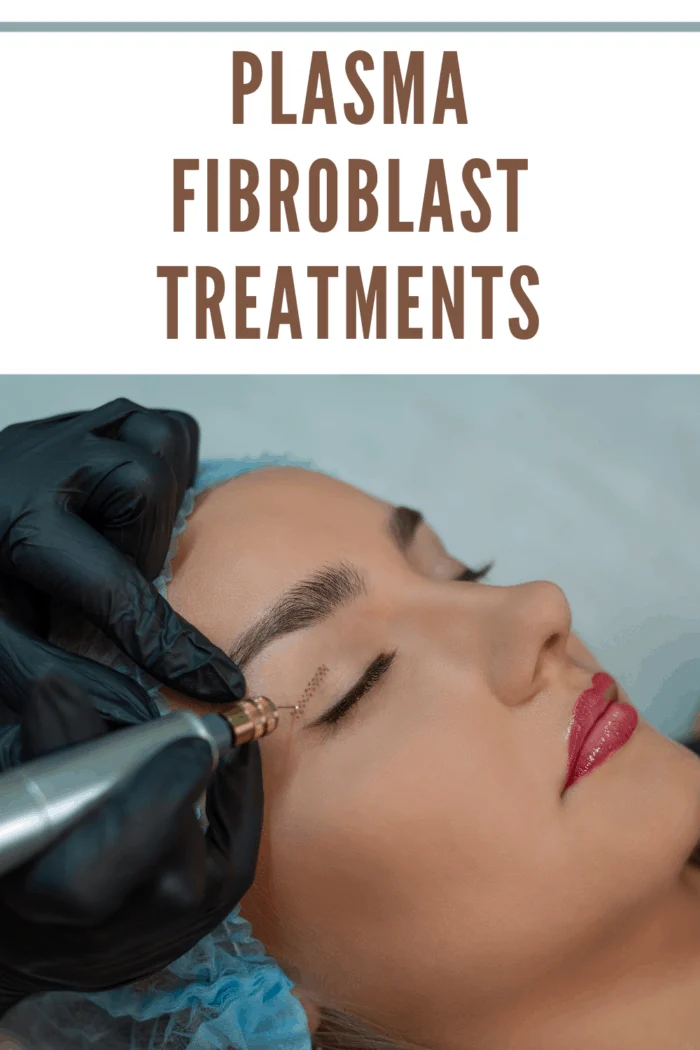What is plasma fibroblast therapy?
It is an aesthetic procedure for tightening and improving the appearance of skin.
That is why some healthcare professionals can offer it as an alternative to injections, laser, and surgical therapies.
This is a new therapy in the facial and cosmetic treatment scene.
Read on to learn how this procedure works and how much it will set you back.

What is plasma fibroblast therapy?
This therapy targets the cells which produce collagen and protein in the dermis, known as fibroblasts.
The dermis is the skin layer of skin just under the outermost skin layer.
The most important role of fibroblasts is to help skin wounds heal and maintain skin firmness and tightness.
A pen-like device is used in plasma fibroblast therapy.
The device uses a high-frequency electric current to small areas of the skin.
The plasma tip releases current just above the skin, so it does not directly touch it.
The current is very targeted.
The hot current creates Micro-injuries or small holes in the layer of the skin.
The heat damage from plasma fibroblast therapy:
• causes tissue contraction (tightening)
• stimulates fibroblast activity
• encourages tissue regeneration
• breaks down proteins in the skin
This is according to a 2019 article published in the PMFA journal.
Healthcare professionals can also refer to this procedure as plasma skin resurfacing.
What are the Benefits of Plasma Fibroblast Therapy?
This therapy is a non-surgical treatment.
Healthcare providers can use plasma fibroblast therapy to treat the conditions below:
• Wrinkled skin, such as above the lips, jawline, neckline, and the eyelids
• Seborrheic keratosis (AAD)
• Photoaging, such as age spots
Cosmetic specialists can also make the lips look fuller using plasma fibroblast therapy.
This is because this therapy can also be used as an alternative to lip fillers.
Does It Work?
Performing plasma fibroblast therapy in a safe and controlled environment may:
• result in some degree of skin facial contour change
• offer mild-to-moderate skin tightening effects
• improve skin texture
After treatment, expect the effects to stimulate fibroblast production for around one year.
This is from the 2014 article published in Clinical, Cosmetic and Investigational Dermatology journal.
However, this is a new aesthetic procedure, so there are few studies on plasma fibroblast therapy.
Plasma fibroblast therapies were used on eight participants in a tiny 2007 study.
One full-face treatment was used on each participant every three weeks.
The patients reported a 69% overall improvement in their facial appearance and a 37% reduction in facial wrinkling after the study.
What is the Procedure Like?
The following are the basic steps, even though the procedure can vary slightly based on where you have the treatment:
Cleanse the skin and apply a topical anesthetic (numbing) cream.
The numbing cream usually takes 30 minutes to take effect.
Use the plasma pen to treat the designated skin area.
The pen makes small scab-like dots on the skin by creating small arcs of microcurrents.
The Healthcare provider removes the numbing cream and minimizes the tingling and burning sensation by applying a cooling gel.
It takes around 30 to 60 minutes to perform this procedure.
• Recovery
• Expect the small dots to scab over and fall off in one week after completing the procedure.
Your skin will heal and appear tighter and firmer in the next couple of weeks.
• One treatment is usually beneficial to some people.
However, some people may need three treatments to see results.
Who is a Good Candidate for this Procedure?
People with moderate or mild skin wrinkling problems are the best candidates for this procedure.
Do not receive this procedure if you:
• use isotretinoin for acne or wrinkles
• have an infection in the treatment area
• have an allergy to topical anesthetic preparations (WebMD)
• are pregnant
• are breastfeeding
Additionally, you should carefully approach plasma fibroblast therapy if you have a history of keloids (wiki) or hypertrophic scarring.
Talking to your healthcare provider before the procedure is important. It would be best to discuss your treatment goals and potential concerns you may have with your healthcare provider.
Is It Safe, and Are There any Side Effects?
It would be best if you established reasonable goals with the healthcare professional who will perform the procedure.
This is very important.
Plasma fibroblast therapy is not as dramatic as a surgical procedure because it can offer results.
The procedure can also have side effects.
Here are some of the side effects:
• skin peeling and crusting
• mild hyperpigmentation (dark spots)
• mild hypopigmentation (light spots)
• swelling
• redness
It is worth note that this therapy is illegal in some parts of the world.
For instance, using plasma pens for cosmetic purposes is not currently authorized in Canada.
The devices and some aestheticians using these devices have not been evaluated for safety, quality, or effectiveness.
That is why Health Canada believes that plasma fibroblast therapy can pose health risks
